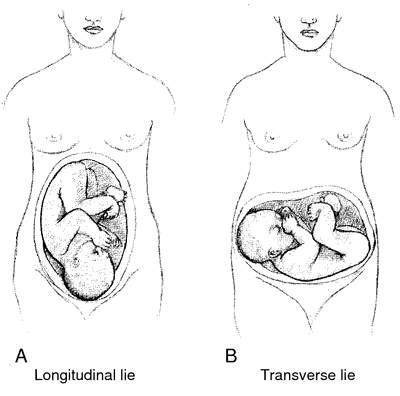This article in Popular mechanics discusses a potential new source:
Pig human transplants...
The article discusses the "ethics", but in Catholic theology it is not a problem. Pig human chimera would be an ethical problem if a lot of genes are transplanted, but not if only a few genes are introduced. (if a lot of genes are tranplanted to make a chimera like the "underpeople" based on animals in the books of Cordwainer Smith, they would be considered human by the church, and the UKBishops even said chimeras with a lot of human genes should be adopted and raised as humans, not just culled and killed for convenience).
But the real danger is not ethics; it is infecion: there is a real potential for causing epidemics.
the existence of xenotropic endogenous retroviruses and the clinical evidence of long-lasting porcine cell microchimerism indicate the potential for xenogeneic infections. Thus, further trials should continue under regulatory oversight, with close clinical and laboratory monitoring for potential xenogeneic infections.
I am listening to a lecture on the population collapse of the Americas because the Europeans accidentally introduced a lot of diseases.
the missing clue to why this happened is the lack of domesticated animals in the Americas.
: in neolithic times, the close contact of humans and domestic animals resulted in a lot of viruses and bacteria migrating from animals to human beings. So there were local epidemics, and later, as trade routes expanded, (often via the silk road trade, the monsoon trade in the Indian Ocean, or the migration of the many steppe peoples such as the Huns, the scythians, the Samartans, the mongols, the turks, who tended to be able to move quickly between China and Iran and then Europe) the result was huge pandemics, but those who survived had more immunity...
So the "population collapses" in Eurasia happened, but they happened many times in pandemics, which often were followed by dark ages and recovery. But even the worse pandemics were one at a time, and the worst case scenerio was 50 percent population drop.
In the Americas, it was a twofold problem: One, everyone got sick at the same time, so there was literally not enough people who were well and able to care for the sick, and two: repeated epidemics of different diseases, so that the survivors of smallpox could then die of influenza or hepatitis B or measles in later epidemics.
Notice I said Measles? A big killer today in malnourished children. This is one of several diseases that are around all the time, but mainly kill children because the adults in the area are survivors of the disease. This means adults are still around to care for sick kids, and keep the civilization around.
But introduce measles into a new area, and it is a different disease.
Measles evolved from animal "rinderpest" about a thousand years ago. Many other diseases similarly are due to animal contact. HIV is probably from monkeys (from the custom of eating monkey meat in parts of Africa: the press didn't mention this part, so some people were under the impression the cause was a funny sexual perversion...of course, Americans think monkeys are nice cuddley animals too, but most Africans and Asians know better.)
Pigs are a big problem here, because they carry a lot of diseases. Trichinosis gets the most attention, as does tapeworm, camplobacter, cryptosporidium, etc.but the main danger are the viruses that evolve into a human form, such as influenza.
The reason for "flu" epidemics is close contact of peasants with their pigs (and most bird flu cases were in those who raised chickens: wild fowl to free range chickens, which is why Jakarta banned people from raising fighting cocks in their back yards, but the real worry is if the bird flu mixes with pig flu and infects humans).
Note about chickens here in the Philippines: usually city folks buy chickens raised cheaply in chicken farms. Some do raise chickens for eggs, but you have to keep them caged, or they will hide the eggs in a nest.
Eating chickens can free roam, but are in danger of becoming dog food for feral dogs, or a meal for poor people who are hungry (one of our neighbors has some wandering around, and I fear our dogs might attack them. However, those chickens are huge, and probably fighting cocks, not eating chickens.
Fighting cocks are ususally kept outdoors under a small shelter, with their leg tied to a post. That way they don't wander off, and they won't attack passing children. As for dogs, the cocks are vicious and can take care of themselves. But those who own and breed the chickens make friends with the chickens when they train them, so are at risk for contacting bird flu.
Just as an addendum: I didn't mention Ebola virus. Ebola Reston infects monkeys, and some of the monkeys were brought to the Philippines where they were kept and bred to sell to research places in the US...and some of the Ebola Reston spread to pigs, including local pigs.
Luckily, unlike monkeys, the pigs only got flu like symptoms, but in one local outbreak, a few humans felt ill, and several had blood tests showing they had caught and survived a mild case of the virus. Luckily it did not spread, which is saying a lot since in the Philippines, the sale of "double dead" meat and infected animals killed and sold instead of having their carcasses destroyed is a problem.


 Alternate Text: The figure above shows
firearm and non-firearm homicide rates among persons aged 10-24 years in
the United States during 1981-2010. The overall homicide rate among
persons aged 10-24 years varied substantially during the 30-year study
period. Rates rose sharply from 1985 to 1993, increasing 83% from 8.7
per 100,000 in 1985 to 15.9 in 1993. From 1994 to 1999, the overall rate
declined 41%, from 15.2 per 100,000 in 1994 to 8.9 in 1999.
Alternate Text: The figure above shows
firearm and non-firearm homicide rates among persons aged 10-24 years in
the United States during 1981-2010. The overall homicide rate among
persons aged 10-24 years varied substantially during the 30-year study
period. Rates rose sharply from 1985 to 1993, increasing 83% from 8.7
per 100,000 in 1985 to 15.9 in 1993. From 1994 to 1999, the overall rate
declined 41%, from 15.2 per 100,000 in 1994 to 8.9 in 1999.
 Alternate Text: The figure above shows
homicide rates among persons aged 10-24 years, by sex and age group, in
the United States during 1981-2010. Homicide rates for males remained
substantially higher than rates for females during 2000-2010. When
homicide rates were examined by age group, rates for persons aged 20-24
years remained highest, and rates for persons aged 10-14 years remained
lowest.
Alternate Text: The figure above shows
homicide rates among persons aged 10-24 years, by sex and age group, in
the United States during 1981-2010. Homicide rates for males remained
substantially higher than rates for females during 2000-2010. When
homicide rates were examined by age group, rates for persons aged 20-24
years remained highest, and rates for persons aged 10-14 years remained
lowest.
 Alternate Text: The figure above shows
homicide rates among persons aged 10-24 years, by race/ethnicity, in the
United States during 1990-2010. During 2000-2010, rates for blacks aged
10-24 years remained the highest and rates for whites in this age group
remained the lowest.
Alternate Text: The figure above shows
homicide rates among persons aged 10-24 years, by race/ethnicity, in the
United States during 1990-2010. During 2000-2010, rates for blacks aged
10-24 years remained the highest and rates for whites in this age group
remained the lowest.







